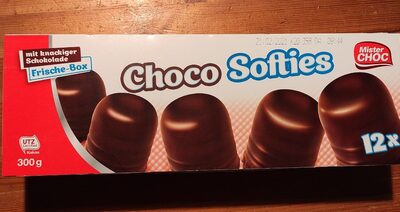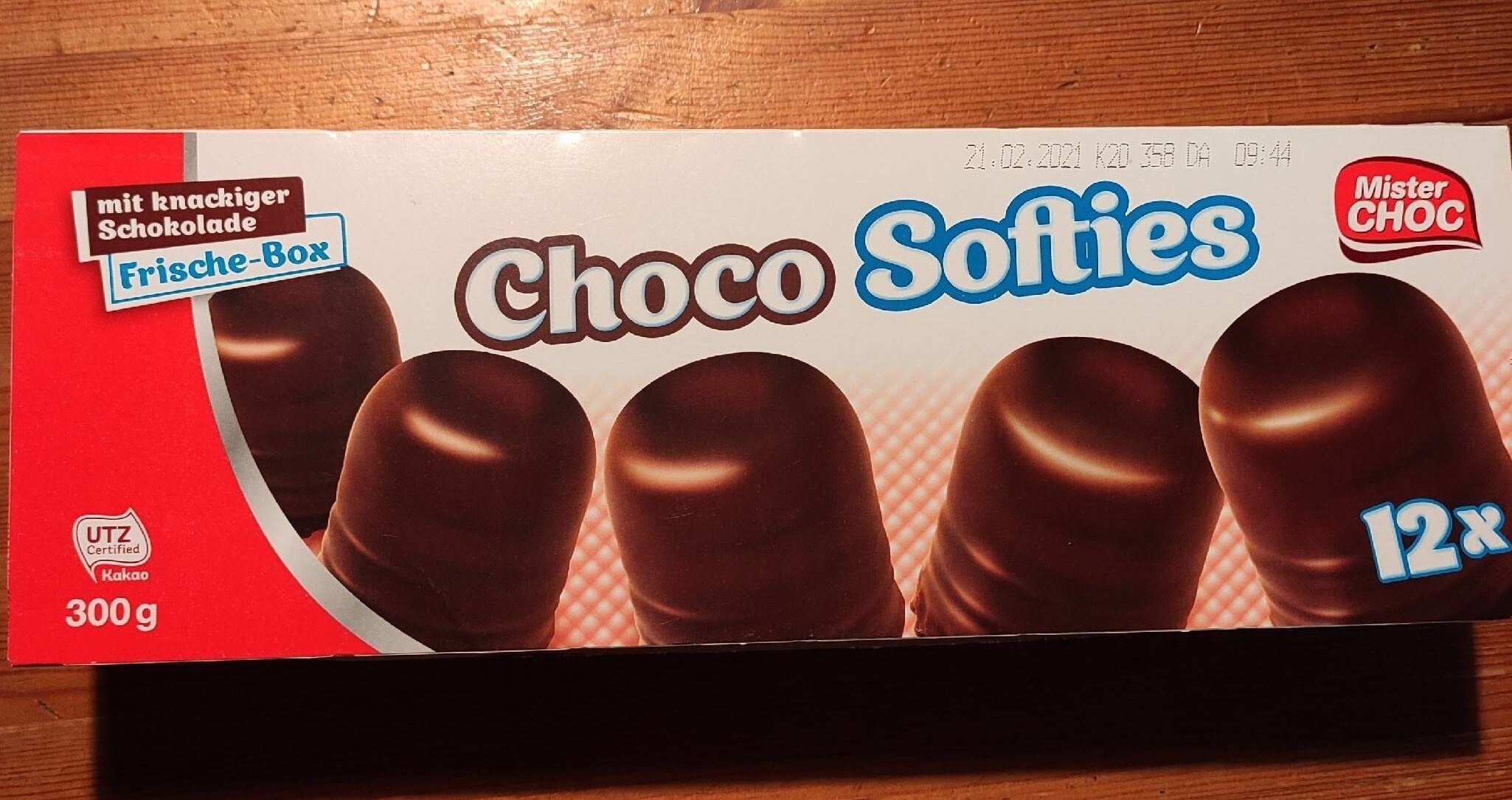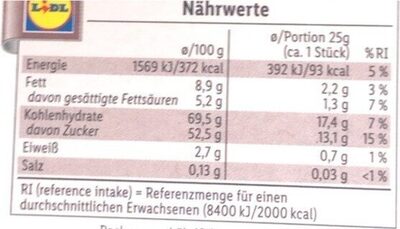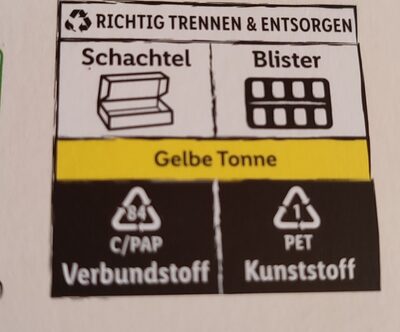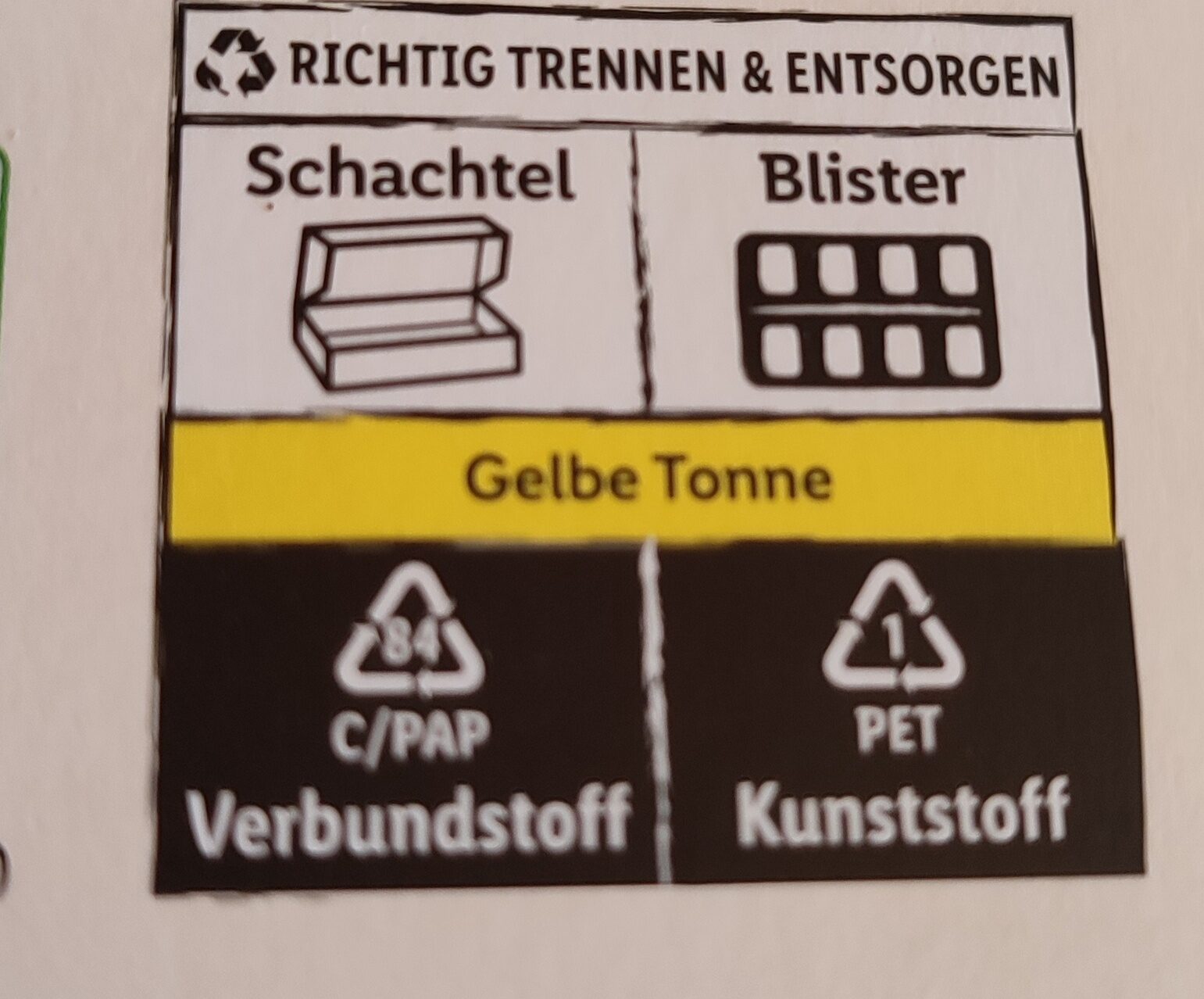Choco Softies - Mister Choc - 300 g
Ambiguous barcode: This product has a Restricted Circulation Number barcode for products within a company. This means that different producers and stores can use the same barcode for different products.
×
This product page is not complete. You can help to complete it by editing it and adding more data from the photos we have, or by taking more photos using the app for Android or iPhone/iPad. Thank you!
×
Vanligt namn: Schaumküsse mit 28% Schokolade
Kvantitet: 300 g
Förpackning: Plast, Kartong, 21 PAP, 23 PBD
Varumärken: Mister Choc, Alpen Fest
Kategorier: Snacks, Söta snacks, en:Cocoa and its products, Konfekt, Chokladgodis, de:Schaumküsse
Etiketter, certifieringar, utmärkelser:
en:German Agricultural Society, en:Sustainable farming, en:Green Dot, Tillverkad i Tyskland, UTZ Certified, UTZ Certified Cocoa, de:Dlg-jahrlich-pramiert


Tillverknings eller bearbetningsplats: Germany
Butiker: LIDL
Matching with your preferences
Report a problem
Datakällor
Produkt tillagd den av twoflower
Senast ändrad produktsida på av lisbac.
Produktsida också redigerad av aleene, autorotate-bot, corrigo, fix-salt-bot, foodrepo, inf, jumati, kiliweb, mifrit, openfoodfacts-contributors, packbot, roboto-app, sanmp23, stephane, yuka.HZxuYOCbPZcaE8TN8J0v4xO5L-K7Hs5UOFxWow, yuka.VEtNNEY0UURnOWNCblBZUzlTanEwTzFWeFk3M1dEdXJJY1lSSWc9PQ, yuka.YUprdU1ZMHp0UDRNb3NBOHh3dlJ5T3d0NVo2S1p6eU5NN1pPSUE9PQ, yuka.ZTY0dlRwWTl0UHN6dlBFNDd5L28xczV0NTVXcWVVQ0ZBUHRQSUE9PQ, yuka.ZmY0akg1azdpK1lVa1BFTzhFTDI1b3drd3BQd0EybVVFOFErSUE9PQ, yuka.sY2b0xO6T85zoF3NwEKvlh1Gfd_Huj3lCRDjw3-z__HRAse0fv1Kz5T4Y6s, yuka.sY2b0xO6T85zoF3NwEKvlmVYf4aPqBjBEQ7vvn2wxdiPIqzqRvpX29PaE6o, yuka.sY2b0xO6T85zoF3NwEKvlmdiauOFiT3VCjXghRGP3ofWdLDKTo1X-afXbqo, yukafix.
